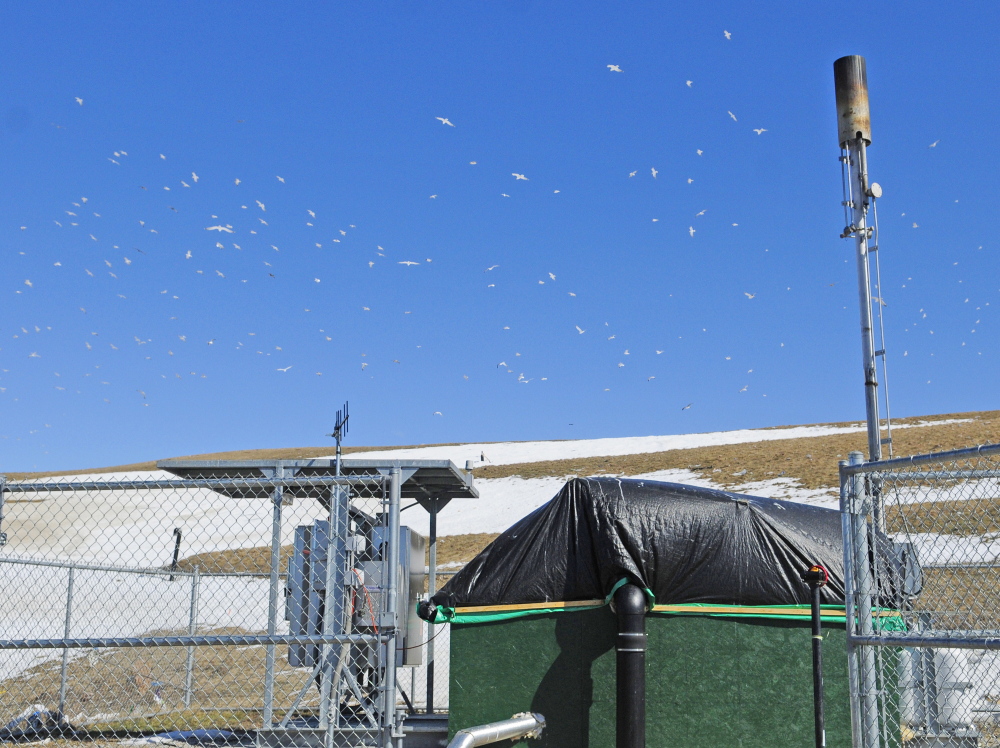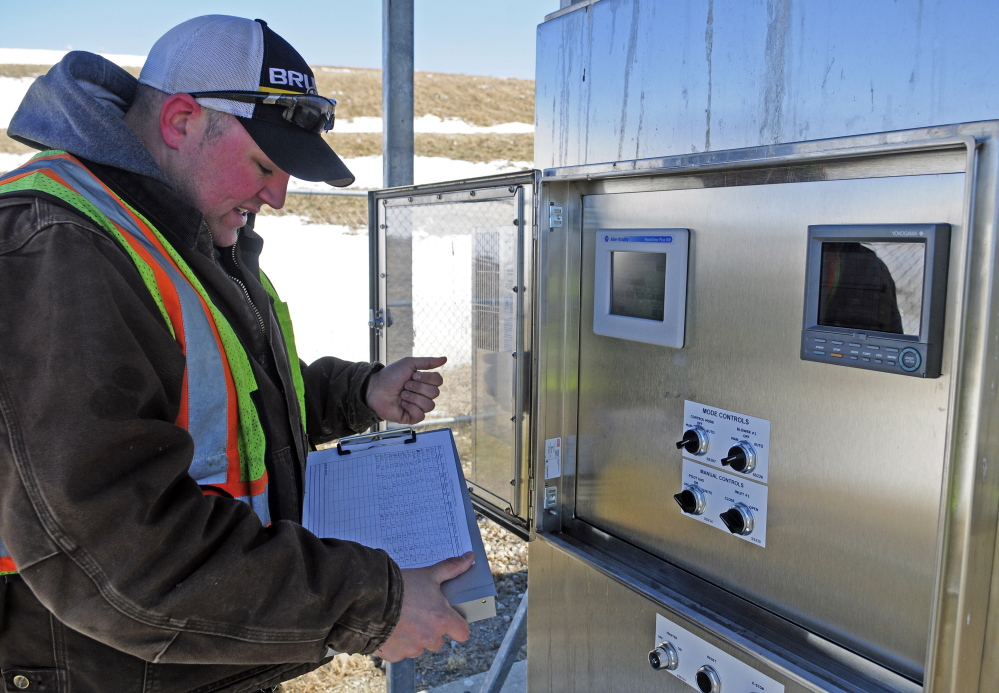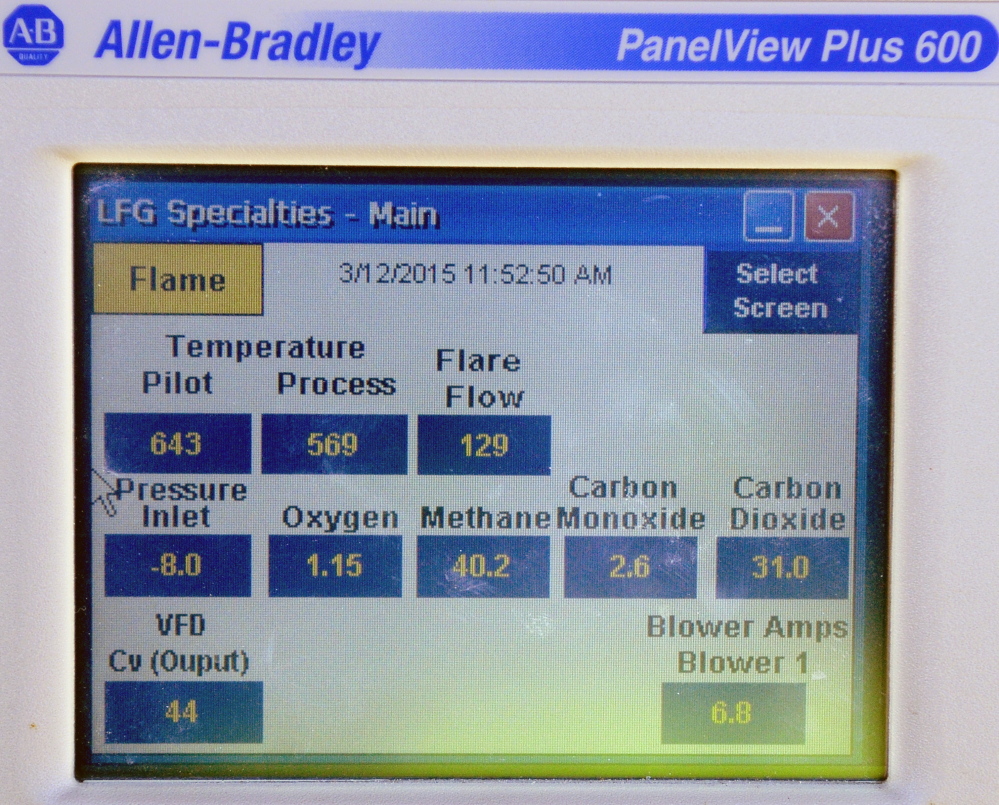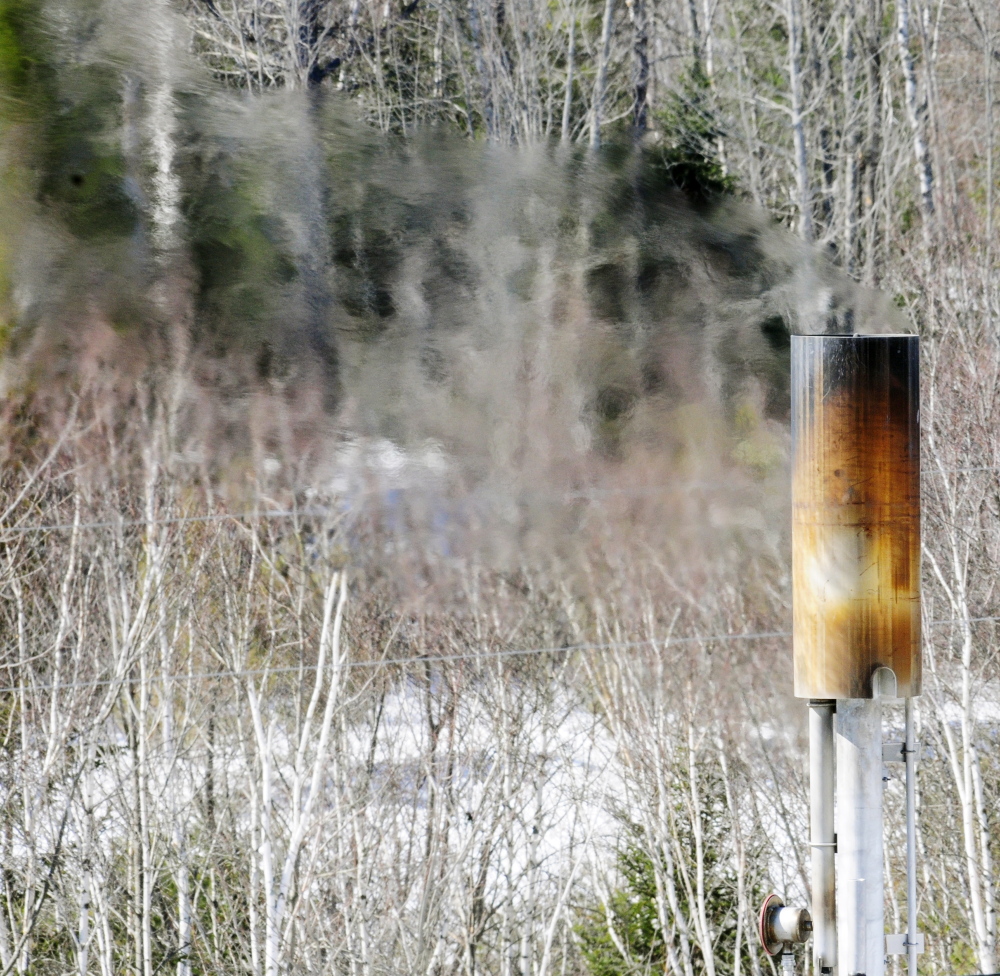AUGUSTA — The city might convert methane gas produced by decomposing waste at Hatch Hill landfill into electricity.
Under a proposal discussed as part of an update on energy efficiency upgrades done and under consideration for the future at city and school buildings, city officials said Thursday they are looking into building a turbine at Hatch Hill to convert methane gas, which already is being captured there to prevent it from escaping into the atmosphere, into electricity to help offset the city’s electricity bill.
The gas now is captured and burned off by a pipeline collection system and a large industrial flare at Hatch Hill. The equipment was installed in 2011 as part of a $2.7 million project meant to help protect the environment by preventing gas from the landfill from escaping into the air.
Robert LaBreck, facilities and systems manager for the city, said it would take a major investment but “is a great application if we can make it work.”
He said the landfill probably could generate 300 to 400 kilowatts a year.
The Augusta Civic Center uses about 1 million kilowatts a year, according to Ralph St. Pierre, finance director and assistant city manager.
St. Pierre said what would make the idea viable would be regulations that allow entities generating renewable energy to use the power they generate indirectly to power their other buildings. He said simply producing the electricity and sending it back to the electrical grid to sell it would get the city only the wholesale rate for electricity, or about 3 cents per kilowatt hour. However, regulations allow entities using renewable energy to sell the power they produce back into the electrical grid and receive a credit for the full retail price of 7 to 9 cents per kilowatt hour, which it can use to offset its electrical bills for other buildings.
Having a turbine at Hatch Hill would require three-phase power there. LaBreck said he’s already had discussions with Central Maine Power Co. about installing three-phase power at the landfill.
St. Pierre said having three-phase power at Hatch Hill also would be helpful for other uses there, including possibly installing a compactor there to crush recyclables so more can be hauled off in one truckload.
LaBreck said more meetings are planned on the proposal for next week.
St. Pierre said a 2012 proposal from a Texas-based firm to convert trash at Hatch Hill into diesel fuel now doesn’t seem likely to happen.
“It isn’t dead, but it is slowly falling off our radar,” he said.
Other potential future projects in the city, according to LaBreck, could include installing solar voltaic panels at Augusta City Center, replacing lighting citywide with more efficient LED lighting, and additional conversions of oil boiler heating systems to natural gas.
Officials previously looked at installing solar voltaic panels at City Center, but the numbers didn’t work financially. However, they said the cost of the panels has decreased over the last couple of years.
The city has made several energy-efficiency upgrades to city and school buildings over the last five years or so, which city staff members summarized at Thursday’s City Council meeting. The upgrades have included the installation of solar panels, such as those at the Augusta Civic Center and Hartford Fire Station; the installation of a microturbine at Augusta City Center, which both generates electricity and helps heat the building; and conversions of all school and most city buildings to natural gas.
St. Pierre said that over the last five years, almost every city facility has had some type of energy-related upgrade.
“This is exciting stuff,” LaBreck said of the ongoing work. “We, as a city, are cutting-edge. We’re doing a tremendous amount of it.”
St. Pierre said the city lease-purchased the equipment to make the upgrades, and the lease payments are being more than covered by savings generated by the upgrades. He said the payback for each project is less than 15 years.
Total investments in the projects so far has been $3.7 million, with $2.5 million for municipal facility projects and $1.1 million for school facility projects.
“Everything is brand new, and it pays for itself,” St. Pierre said. “And you reduce your carbon footprint while you’re at it.”
“They all had positive cash flow, so there is no impact to the tax rate,” he added.
Councilors praised the city staff for its involvement in the work.
Keith Edwards — 621-5647
kedwards@centralmaine.com
Twitter: @kedwardskj
Send questions/comments to the editors.







Success. Please wait for the page to reload. If the page does not reload within 5 seconds, please refresh the page.
Enter your email and password to access comments.
Hi, to comment on stories you must . This profile is in addition to your subscription and website login.
Already have a commenting profile? .
Invalid username/password.
Please check your email to confirm and complete your registration.
Only subscribers are eligible to post comments. Please subscribe or login first for digital access. Here’s why.
Use the form below to reset your password. When you've submitted your account email, we will send an email with a reset code.